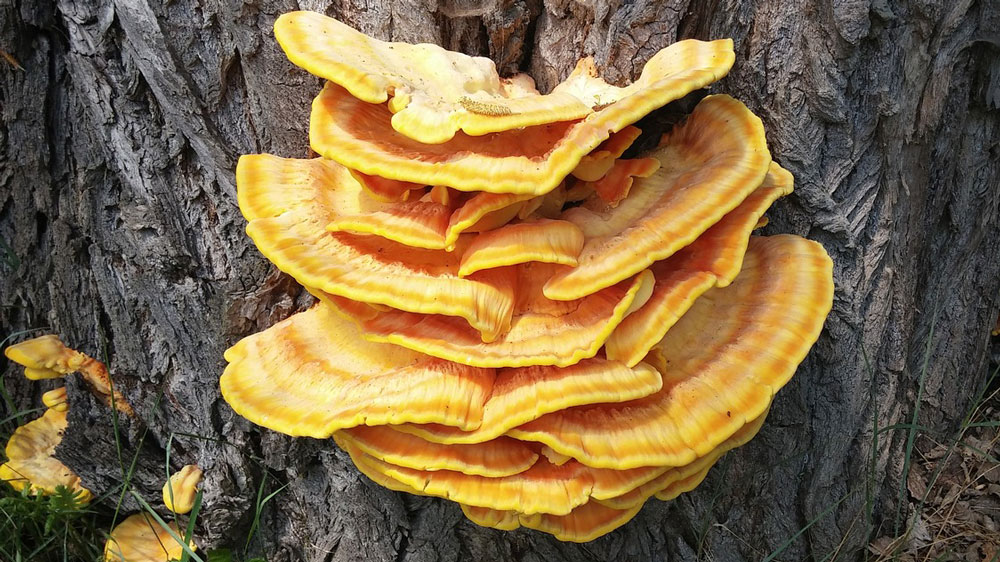- Simmi Shirwaikar, L.Ac928 Broadway
Suite 1205
New York, NY 10010(917) 478-0627 Clinic Hours
Tue8am - 5pmWed8am - 1pmThurs8am - 5pmFri8am - 1pmSat9am - 2pmBy Appointment Only
-
Latest Articles:
- • Add These 10 Immune-Boosting Foods to Your Fall Diet •
- • Keep Your Skin Healthy and Glowing with these Fall Skincare Tips •
- • Beat End of Year Burnout with these Fall Self-Care Rituals •
- Sign up to receive news and updates and get my free report:“The Top 10 Reasons to Try Acupuncture”

Health WellNews
Herbal Tonics for Fall
Fall is a time of transition for nature, as well as our own bodies. In Traditional Chinese Medicine (TCM), each season is associated with specific organ systems. During the autumn months, the lung and large intestine energetic meridians are in control. It is extremely important to improve lung function during the fall months to allow for an easy transitional period and to prepare for the upcoming winter months.

The lung system in TCM is responsible for the body’s immunity or Wei Qi (pronounced “way chee”). When the Wei Qi becomes depleted or deficient, the body becomes ill. And during the fall months, when the weather is transitioning and temperatures are falling, it becomes vital to take precautions so the immune system and Wei Qi don’t fail our bodies, allowing disease to take root. The most common diseases of the fall season are allergies, colds and the flu. But there are ways to boost or tonify the Wei Qi.
Traditional Chinese Medicine utilizes many different modalities to help keep the body free from disease. These modalities include acupuncture, moxibustion, nutrition, qi gong, tai chi and herbal formulations. It is these herbal formulations we are discussing today.
Chinese herbal medicine has been used for millennia to keep the body free from disease and to help remove disease when it attacks. Herbs can be used alone or combined to make stronger herbal formulas. And while not all of the herbs we will discuss here are specific to TCM, they can be found and utilized easily.
Astragalus or Huang Qi: This herb is a favorite among TCM practitioners. It is an excellent tonic herb, as well as an adaptogen that can be used year-round to ensure good health. In TCM, it is considered to be one of the best tonic herbs available, especially for those who are already fatigued. Specifically, this herb is known for its ability to strengthen the Wei Qi.
Cordyceps or Dong Chong Xia Cao: This herb is known to enrich the bone marrow, where white blood cells are made. White blood cells are a large part of the immune system and they specifically fight off infections in the body. In this way, Dong Chong Xia Cao definitely plays a role in tonifying the Wei Qi. This herb is also used to replenish the adrenal glands when there is adrenal fatigue. When the adrenals are fatigued, the whole body is running at a deficient level.
Reishi Mushroom or Ling Zhi: This herb is sometimes called the “great protector” because it guards the body against the detrimental effects stress can have on the physical body. When taken regularly, it has been shown to improve immunity, while also calming the nerves. Specifically, it can help inhibit tumor growth in both breast and prostate cancer.
As you can see, herbs can be very beneficial and help keep the body free from illness. The herbs mentioned above are just a few examples that would be good to have around during the season of fall to help boost your immune system.
Acupuncture and Hay Fever
Hay fever, which is medically termed allergic rhinitis, is an ailment that affects nearly 20 million people in the United States, according to the Centers for Disease Control. Hay fever is actually an allergy caused by pollen or dust, which causes the mucous membranes of the eyes and nose to become itchy and inflamed, resulting in sneezing, a runny nose and watery eyes. Hay fever is the fifth most common disease in the United States and it tends to affect people during three out of the four seasons in the year. There are multiple over-the-counter medications to treat hay fever, including antihistamine sprays, eye drops and nasal corticosteroids.

The problem with most of these suggested treatment methods is they all have adverse side effects. Traditional Chinese Medicine (TCM), however, can treat the symptoms without any harsh side effects. A TCM practitioner has a whole host of modalities in their toolbox that can help the hay fever sufferer. This includes acupuncture, herbal formulas and nutritional counseling. When these tools are used in conjunction, studies have shown hay fever sufferers may experience a significant drop in their symptoms.
According to TCM theory, hay fever is usually attributed to a deficiency of the body’s essential energy or Qi (pronounced “chee”), coupled with an invasion of wind heat in the lungs. But every patient is different and symptoms may differ from person to person. For most hay fever sufferers, TCM treatments will aim to open the lungs and expel the wind heat.
Acupuncture is a holistic medical technique that uses hair-thin solid stainless steel needles to stimulate acupressure points on the body. These acupressure points can do many different things, including reducing inflammation, decreasing lacrimation (watery eyes) and relieving sneezing. According to one study done by the Lishui Hospital of Traditional Chinese Medicine, when acupuncture was used as a standalone therapy, the participants reported a nearly 67 percent decrease in their symptoms. When herbal formulas were added, that efficacy rate increased to over 71 percent.
There are several herbal formulas that can be used to treat hay fever. The one used, will depend on the specific symptoms of the patient. However, the base formula frequently used is known as Cang Er Zi San. The herbs in this formula can unblock the sinuses and alleviate pain. The biggest difference between over-the-counter remedies and TCM herbal formulas is the formulas can be changed as the person’s symptoms change.
Acupuncture improves the Qi throughout the body by stimulating the body’s own internal regulating systems. This will then allow the body to heal itself, by strengthening the body’s resistance and regulating the antigen/antibody reaction created by the body when it encounters pollen or dust that may trigger the hay fever attack. And since hay fever is attributed to having a weak immune system in TCM, the herbs usually given will help support and strengthen the person’s immunity.
This is also where nutritional counseling may play a part because many foods can create phlegm and dampness that exacerbate a person’s symptoms. Things like dairy and excess sugar may need to be avoided during the flare-ups. Also foods that generate or create heat are usually not advised. However, drinking plenty of water is always a good idea.
We can help determine if you are a good candidate for treatments and also help you to avoid suffering in the first place, as this medicine can and should be used as preventive medicine.
Acupuncture and Maintaining Healthy Skin
Health is something most people strive for every single day. Our skin is the outward expression of how healthy or unhealthy we are. And while many people believe makeup is the ultimate way to enhance your appearance, many times it is only hiding underlying health issues. Vanity is a virtue that can be quite unbecoming, expensive and time consuming. In the United States alone, people are expected to spend nearly $11 billion on skin care by 2018, according to Global Cosmetic Industry Magazine. And all of the money being spent is out of pocket, meaning technically it is considered a luxury item and not a necessity.

Healthy skin is something that can be representative of much more taking place inside the body. When our skin is dry, cracked, dull, lackluster or covered by acne, it can indicate serious imbalances within the body. This is where things like acupuncture and Traditional Chinese Medicine can be very beneficial. Cosmetic acupuncture is considered the truest form of anti-aging medicine because it improves the look of the skin, while still optimizing overall health. Beauty and health are inseparable and therefore, they should be addressed together.
Cosmetic acupuncture still follows all the same principles of Traditional Chinese Medicine. Acupuncturists specializing in cosmetic acupuncture do a thorough intake and health assessment to determine any internal imbalances. And while the ultimate goal for the patient is to have healthier looking skin, the acupuncturist will treat according to the internal imbalances. Once these imbalances are corrected, the skin will become healthier. This is not to say that cosmetic acupuncturists don’t directly treat the visible skin issues, because they do.
Cosmetic acupuncture utilizes tiny sterile needles placed in and around areas of the skin that may be dull, saggy, wrinkled, inflamed or even have some sort of deformity. The insertion of these needles will do a couple of things that help the skin to heal. First, the needles will activate collagen production in areas that have become sunken or wrinkled. This will help to fill in those areas and decrease the lines. Secondly, the needles will stimulate an immune response. This triggers the body to send immune cells to the affected areas, thus signaling molecules like growth factors and cytokines, to repair the skin.
However, cosmetic acupuncture cannot be relied upon completely to help the skin repair and replenish. Most cosmetic acupuncturists will also coach their patients about proper diet and other health issues that may be contributing to the appearance of the skin. For instance, did you know excessive stress can actually cause us to age faster and look older? This is another way that acupuncture can help keep the skin healthy. When a person is extremely stressed, the body reflects it through the skin. Stress can cause breakouts due to an increase in hormones, making the skin oily and decreasing the body’s defenses against bacteria. This is why adequate sleep is so important.
Improper diet is another area a cosmetic acupuncturist may discuss and one that is vital for healthy skin. Things like green tea, vitamin C and Omega-3 fatty acids are wonderful items to add to the daily diet if you are trying to keep the skin healthy. Green tea is full of antioxidants and anti-inflammatory components that help soothe and reduce skin redness. Vitamin C has been shown to increase collagen production, especially when applied topically. But taking Vitamin C internally also increases antioxidants that keep the skin healthy. Lastly, Omega-3 fatty acids, help keep the skin looking youthful, while retaining its elasticity.
Cosmetic acupuncture is a quickly growing sector of Traditional Chinese Medicine. If you are dealing with any kind of skin issue and looking for a natural way to treat it, finding a licensed acupuncturist would be a great place to start. Your skin and body will thank you.
Three Ways to Alleviate Stress in Under 10 Minutes
We all have stress. Stress at work, stress at home, stress, stress, stress. And most of us know how harmful chronic stress can be to our bodies and minds. Stress can cause us to become fatigued, irritable, sad, restless, anxious and unmotivated. It can also lead to detrimental habits like smoking, drinking, drug usage and overeating.

What if you could combat and alleviate stress in 10 minutes or less? Your body, family, friends and coworkers would probably thank you. So, let’s explore three easy ways to fight off everyday stress.
Meditation
Meditation can help relieve symptoms of stress in as few as five minutes. Anybody can practice meditation and it can virtually be done anywhere. It’s simple, inexpensive and you won’t need anything special to practice. Meditation produces a state of relaxation while calming the mind. It allows you to focus your attention on peacefulness instead of the hectic everyday life most of us live. There are tons of books, magazine articles, apps and videos explaining how to meditate. One of the easiest forms of meditation is using a guided meditation video or recording. You can find numerous options online. There are also many different forms of meditation, such as walking meditation, mandala coloring meditation, yoga meditation and even Qi Gong. Explore and see what form resonates with you best. You can also choose more than one type and interchange them for even better results.
Breathing
Deep breathing relieves stress by activating our natural relaxation responses. Relaxation responses are the exact opposite of our body’s stress response. Deep breathing is a relaxation technique that brings your body and mind into an equilibrium state. The deep breathing technique is very simple. One sits comfortably with the back straight and then proceeds to breathe. The breaths should be very deep and felt in the center of the abdomen. Breathe in through your nose and out through your mouth. As you breathe in, your abdomen should expand accordingly. The breath should be let out slowly and with purpose. You can also silently count to 10 on each inhalation and exhalation. This practice works really well in an office setting where you only have a few minutes to spare. Give it a try.
Acupressure
Acupressure can help alleviate stress anywhere and many times, nobody will even know you’re doing it.
Acupressure utilizes acupuncture points on the body, but without the deeper stimulation that occurs when acupuncture needles are used.
There are several points on the body you can use to combat stress. All of the points about to be mentioned can be either pressed upon or tapped upon lightly. The first point is located between the breasts, level with the nipples, directly over the sternum or breastbone. Applying pressure or tapping this point will help relieve stress felt in the chest and back areas. The next point is located in the webbing between the thumb and forefinger. This point helps relieve muscle tension associated with stress and it’s great for pain located anywhere in the body. Finally, try the point located directly between the eyebrows, known as Yin Tang. This point will help calm your mind and reduce overall stress. It is also great for tension headaches and eye strain associated with excess stress levels.
There are many ways to alleviate stress. Most can be done fairly quickly and without drawing too much attention to yourself. Investigate the options and decide which method works best for you. Happy relaxing!
Five Reasons to Try Acupuncture This Summer
Summer is a time of abundant energy, sunshine-filled days and warmth. In Traditional Chinese Medicine (TCM), summer has many different associations that help define it. The element of summer is fire, the color of summer is red, the emotion of summer is joy and the governing organs are the heart and the small intestine.

The Traditional Chinese Medical System relies heavily on the five elements and how they work and interact within the body. In TCM, there are multiple levels. The first is yin and yang. At the most basic level, yin is like water and yang is like fire. As mentioned, fire is the element of summer. Fire is yang in nature, which means it is symbolic of maximum activity. During the summer months, everybody and everything is more outgoing or outward in nature. And as the heart is the main organ associated with the season of summer, it should be given close attention and nourished to remain healthy.
One of the most common problems that arises during the summer months is insomnia. The kids are out of school, it stays light longer and there are more activities the whole family can participate in, so people tend to get to bed later and wake up later. This can lead to insomnia and other sleep issues. Acupuncture, which is just one modality used by TCM, is a great way to help control sleep issues. It helps balance hormones that can be out of whack, allowing for better sleep.
For many people, headaches occur more frequently during the summer months. The reason being is the higher temperatures actually cause the blood vessels in the head to expand, which applies more pressure against the nerve endings. Also dehydration can lead to summer headaches. If dehydration is the cause, the best remedy is drinking water or eating foods that have a high water content, like watermelon and cucumber. However, if the headaches are caused by excess pressure, acupuncture can help with that. Not only can acupuncture lower blood pressure, but it can also calm the over-excited nerve endings.
Another common ailment during the summer is the infamous heat rash, otherwise known as prickly heat. This usually occurs on areas of the body covered by clothing, where lots of sweat is produced. While most heat rashes disappear in a few hours or days, they can still be quite uncomfortable. Acupuncture can help decrease the inflammation and itching associated with heat rashes in just one or two treatments.
As odd as it may seem, summer can also be a time when people contract colds. Common summer situations like air conditioning, traveling and airplane flights can cause a summer cold and also make the symptoms worse. While colds usually have to run their course, acupuncture can help shorten the length of the cold and drastically decrease the symptoms.
Hay fever and allergies often occur during the summer months because of the fluctuating pollen levels. Getting regular acupuncture treatments before and during the season of summer can be very beneficial for those who are affected by allergies and hay fever. Acupuncture helps control the sneezing, runny nose and watery, itchy eyes, common symptoms for allergy sufferers.

